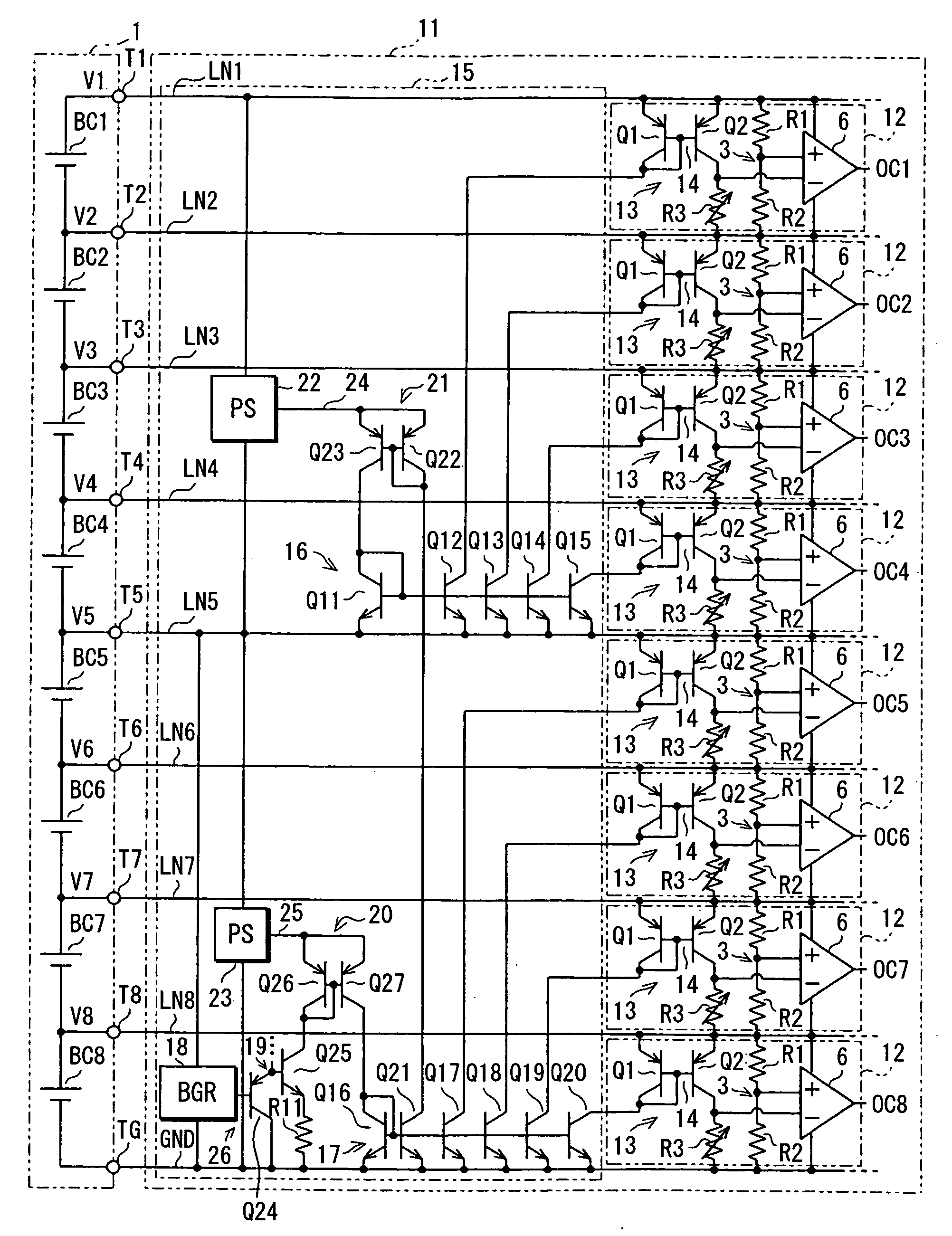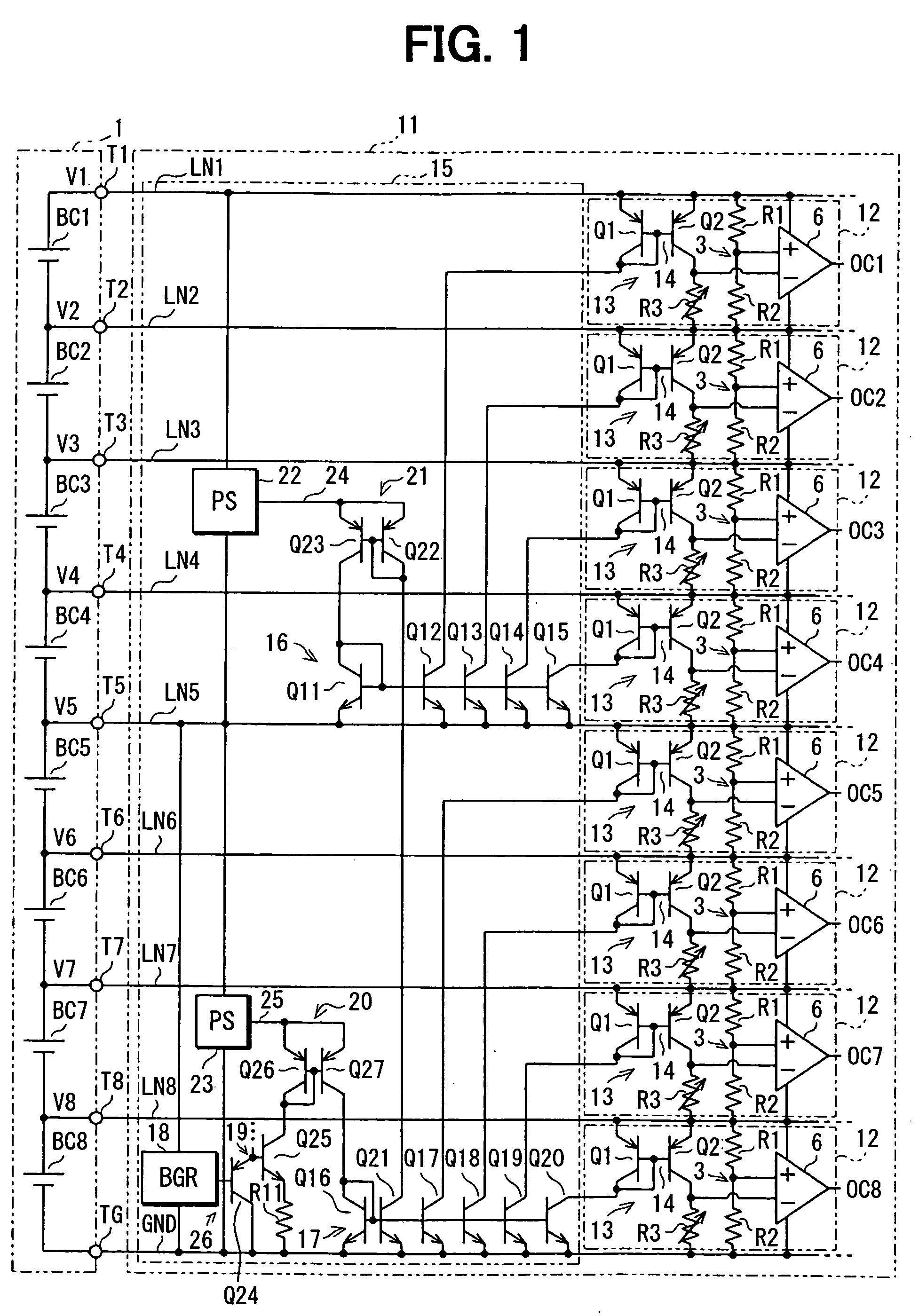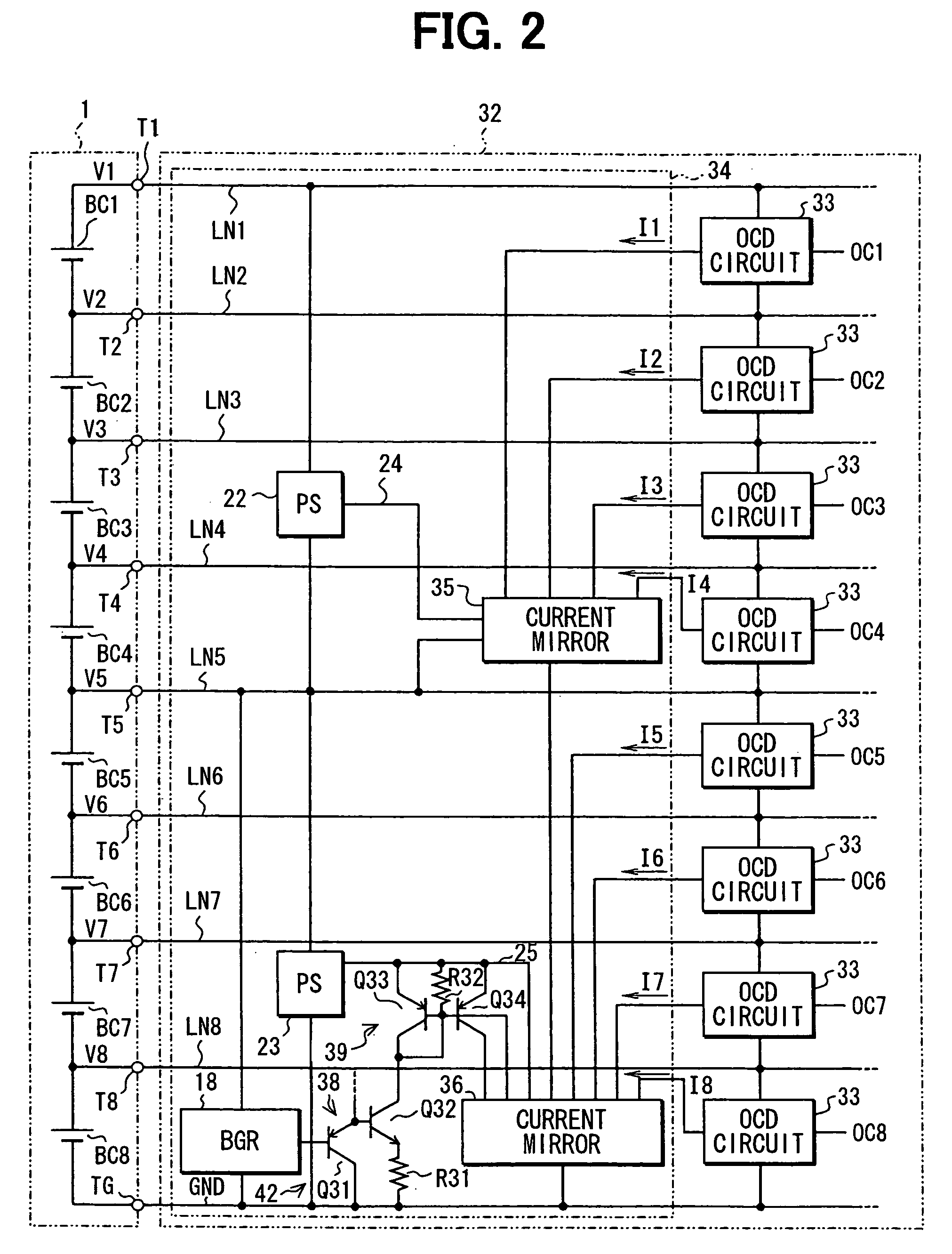Current mirror circuit and constant current having the same
a constant current and mirror circuit technology, applied in the direction of electric variable regulation, process and machine control, instruments, etc., can solve the problems of increasing the chip size and manufacturing cost of the ic, increasing the current flowing the resistor, and reducing the chip size of the ic. , to achieve the effect of high mirror ratio, simple configuration and reduced chip size of the i
- Summary
- Abstract
- Description
- Claims
- Application Information
AI Technical Summary
Benefits of technology
Problems solved by technology
Method used
Image
Examples
first embodiment
[0027] Referring to FIG. 1, a first embodiment of the present invention is described.
[0028] An assembled battery 1 may be, for example, used for an electric vehicle (EV) and a hybrid vehicle (HV). The assembled battery 1 includes multiple cell groups of secondary cells such as lithium-ion cells (3.6 V per cell). The cell groups are connected in series. Each cell group has eight cells BC1-BC8 that are connected in series. Each cell group has terminals T1-T8, and TG. The terminal TN is a positive terminal of the cell BCN, where N is a positive integer between 1 and 8 inclusive. In other words, the terminal T(M+1) is a negative terminal of the cell BCM, where M is a positive integer between 1 and 7 inclusive. The terminal TG is a negative terminal of the cell BC8.
[0029] A control IC 11 monitors and controls a state of charge (SOC) of the assembled battery 1. Each cell group is provided with the control IC 11. The control IC 11 detects voltages of each of the cells BC1-BC8 and perform...
second embodiment
[0054] Referring to FIGS. 2-8, a second embodiment of the present invention is described.
[0055] A control IC 32 monitors and controls the state of charge (SOC) of the assembled battery 1. Each of the cell groups is provided with the control IC 32. The control IC 32 detects the voltage of each of the cells BC1-BC8 and performs the charge / discharge control that keeps the SOC of each of the cells BC1-BC8 in the proper state.
[0056] The control IC 32 includes a constant current circuit 34, an overcharge detection (OCD) circuit 33, and an overdischarge detection circuit (not shown) that is similar in structure to the overcharge detection circuit 33.
[0057] Each of the cells BC1-BC8 is provided with the overcharge detection circuit 33 and the overdischarge detection circuit. When the assembled battery 1 is connected to the control IC 32, the terminals T1-T8 of the assembled battery 1 are connected to voltage lines LN1-LN8 of the control IC 32, respectively. The terminal TG of the assembl...
third embodiment
[0115] Referring to FIG. 9, a third embodiment of the present invention is described. In the third embodiment, each overcharge detection circuit 33 has a current mirror circuit 59 shown in FIG. 9 instead of the current mirror circuit 56. The current mirror circuit 59 is formed by adding an early-effect cancellation circuit 60 to the current mirror circuit 56. The early-effect cancellation circuit 60 includes transistors Q63 (as the sixth transistor), Q64 (as the seventh transistor), and a constant current circuit 61.
[0116] As an example, in the overcharge detection circuit 33 for the cell BC1, the transistor Q63 has the emitter connected to the collector of the transistor Q57 and the collector connected to the trim resistor R41. The transistor Q64 has the emitter connected to the voltage line LN1, the collector connected to the base of the transistor Q63, and the base connected to the collector of the transistor Q57, i.e., the emitter of the transistor Q63. The constant current cir...
PUM
 Login to View More
Login to View More Abstract
Description
Claims
Application Information
 Login to View More
Login to View More - R&D
- Intellectual Property
- Life Sciences
- Materials
- Tech Scout
- Unparalleled Data Quality
- Higher Quality Content
- 60% Fewer Hallucinations
Browse by: Latest US Patents, China's latest patents, Technical Efficacy Thesaurus, Application Domain, Technology Topic, Popular Technical Reports.
© 2025 PatSnap. All rights reserved.Legal|Privacy policy|Modern Slavery Act Transparency Statement|Sitemap|About US| Contact US: help@patsnap.com



